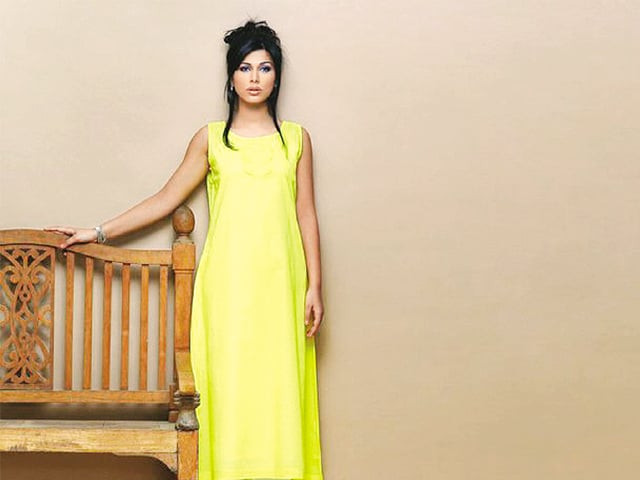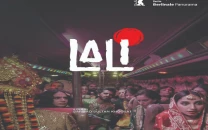Ready, steady, go
Retail pret has become the rage for Pakistan's elite.

The past year however has seen pret become a buzz word in fashion with multiple stores cropping up to serve readymade clothing to the upper middle classes and the elite who till then preferred customised clothing, more fashionably called couture.
The eventual move away from the three piece shalwar kameez suit and the introduction of ‘separates’ lead to the initiation of pret. A separate ‘pant’ could now be teamed with a separate ‘shirt’ in the same manner that western clothing was mixed and matched to a range of permutations and combinations of clothing that made pret the rage that it is now. Even designers have come to the point where they understand the dexterity, utility and efficacy of the concept and many such as Deepak Perwani, Maheen Khan, Kamiar Rokni, Maheen Karim amongst a host of others have followed suit.
Fashion weeks are a visual representation of what’s in fashion and have made it easier to pick on trends. Retailers should be able to translate this for the market while retaining their signature style.
Real pret however lies not with fashion coterie but with the clothing stores like Generation that to this day provide the three piece suit and for the more fashion savvy, with the new crop of stores like Ego, Sheep and Daaman. The power of pret has even lead niche designer stores like Labels and Ensemble jump the band wagon and launch their indigenous, often budgeted lines, to match the trend.
The designer retail stores however are not making a connection with fashion like they should. For instance stores such as Labels and Ensemble that are the front line of the fashion industry as retailers that stock designers and are now equal players in the pret game, should be the first ones to capitalise from their front row access to fashion weeks and subsequent out flow of trends. So far one notices that it is only Ensemble that is managing to make a successful headway in this direction with its recently launched budgeted pret line called ‘One’ with its Rs2000-3000 average price points. Yet what Ensemble has also yet to develop is a design aesthetic in consonance with predominant trends.
Brand such as Ego, that has arguably spear headed the pret movement by providing modestly priced clothing for working women, are also not evolving ‘fashionably’. The brand has a signature design palette with bold motifs and straight fuss free cuts that became its claim to fame, and has now begun to delve into slightly more formal wear, yet its association with high fashion remains limited at best. “I used to be a huge Ego fan,” says Madiha, a sales excecutive, “But now their designs have become a bit too bold, bordering on odd and they don’t offer a variety of cuts.”
Ego nonetheless has been a success story that has boosted and compelled others such as pastel pretty offerings by Sheep and a line of savvy clothing by Daaman, to follow. While Sheep is sticking to its guns for simple structured clothing in a sophisticated design and colour palette, it has managed to carve a niche for itself with women who have a sedate design sense. Lately they have started a line of slinky tops perfect for a soiree or a party priced slightly higher than their average, but their designs can compete with any international label offering similar party wear. The contention with Sheep however is that its price points are much higher averaging at about Rs3000 and as Saman, who works in a bank says, “Some of their designs such as the spaghetti straps and halters cannot be worn to work.”
A brand that has made a successful transition at all fronts is Daaman. Not only has it marketed itself exceedingly well via Facebook but has now launched a gift card worth Rs2000 which is ingenious since an average garment at Daaman fluctuates between Rs2000 and Rs2400. Daaman’s unique selling proposition lies in how quickly it picks up on fashion trends such as the season’s hottest churidaar sleeves, and offers a variety a cuts and silhouettes. The brand has effectively picked up on the manner in which fashion is evolving in the country: moving away from embellishment towards an emphasis on cuts, drapes and styling of a garment - a lesson that other retail stores need to pick up and fast.
Where do you feel the real pret lies?
These stores are definitely catering to pret. Anything that can be picked up off the rack for Rs3,000 to Rs4,000 qualifies as retail pret
Deepak Perwani, designer
Sheep. Alia Jaffer has a comprehensive understanding of the market which reflects strongly in her design and price bracket
Zahir Rahimtoola, Labels
Daaman and Sheep are definitely the call of the day, this is exactly where the future of fashion lies, here in Pakistan.”
Maleeha Chaudhry Nasir, Daaman
Published in The Express Tribune, January 16th, 2011.



















COMMENTS
Comments are moderated and generally will be posted if they are on-topic and not abusive.
For more information, please see our Comments FAQ